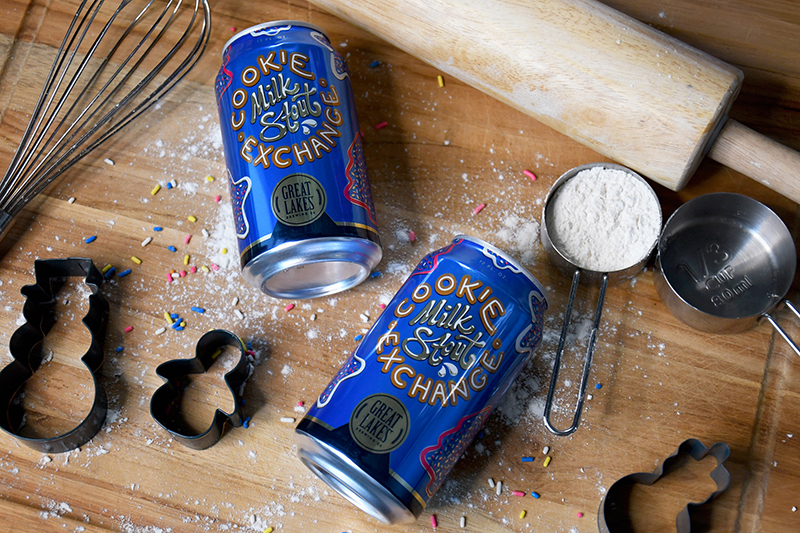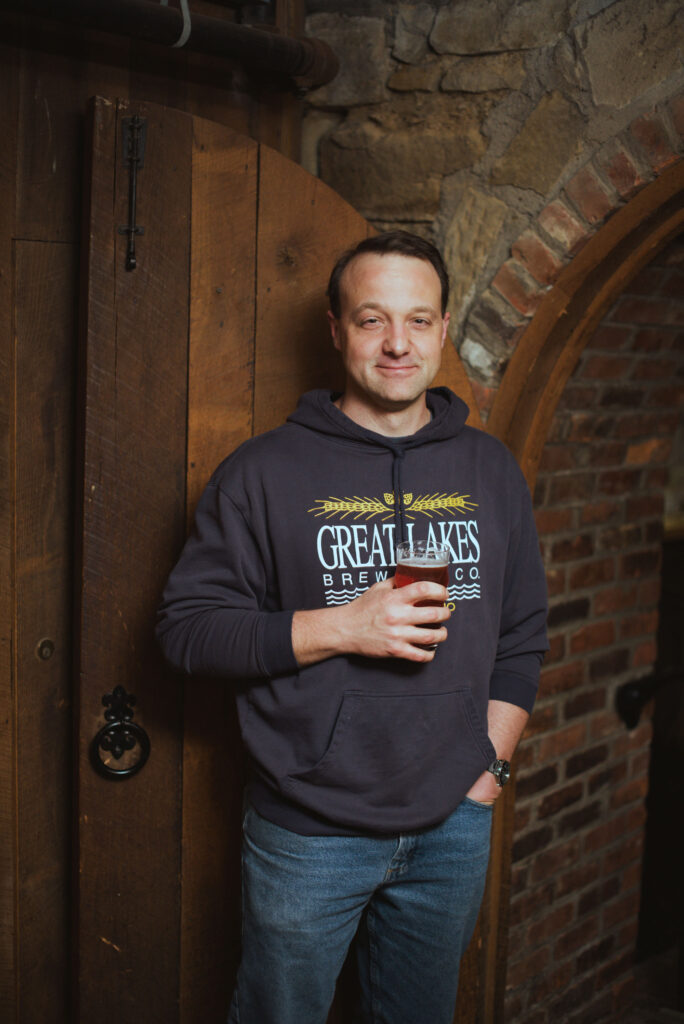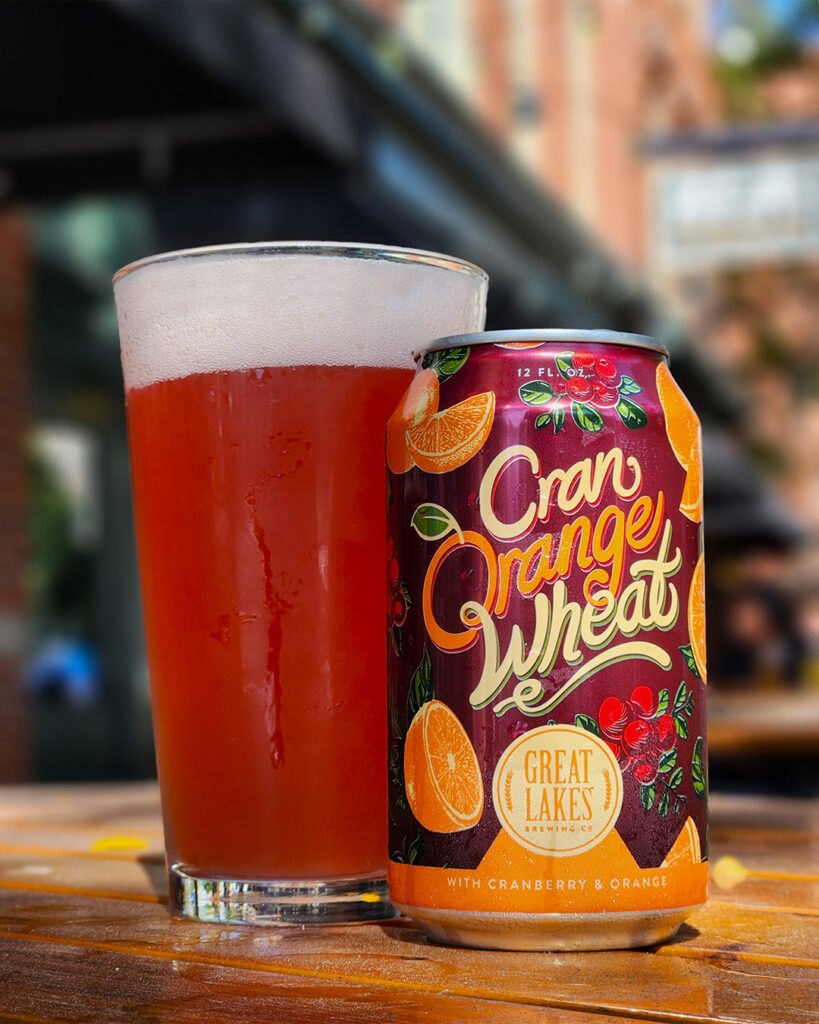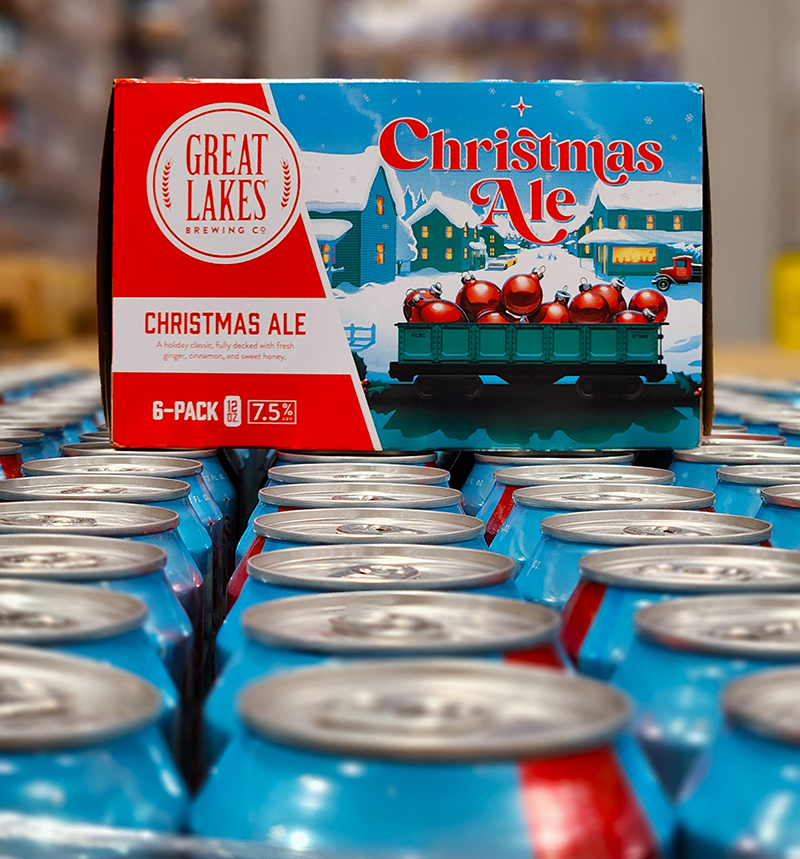By embracing familiar seasonal flavors, Great Lakes creates nostalgic beers with cross-generational appeal.
By: Joshua M. Bernstein

Few breweries toil as tirelessly as Great Lakes Brewing to make beer that brings festive cheer. To meet massive demand for its spiced Christmas Ale, the Cleveland, Ohio, brewery begins making the honey-infused holiday beer in late July, kicking off four months of all-out production that totals around 25,000 barrels. “And we sell it all in 10 weeks,” says Steven Pauwels, the brewery’s co-CEO. While Christmas Ale is a wintertime tradition for countless drinkers, Great Lakes has expanded its holiday portfolio with equally cheerful offerings including Cran Orange Wheat, Cookie Exchange Milk Stout, Holiday Pack that includes Cookie Exchange and Christmas Ale, plus new 19.2 oz. cans of Christmas Ale. The innovative beers leverage nostalgia and celebratory foods, delivering drinkers flavor-forward experiences fit for sipping with friends and family, enjoying around a roaring fire, and warming stomachs while snowfall blankets the ground. Here, we chat with Pauwels and brewmaster Mark Hunger to unwrap the brewery’s holiday game plan.
This interview has been edited and condensed for length and clarity.


Heady Times (HT): Great Lakes opened in 1988, and Christmas Ale debuted in 1992. Craft beer drinkers who fell in love with Christmas Ale in the 1990s and 2000s now have kids old enough to legally drink beer. How is Christmas Ale becoming a holiday tradition that’s passed down from generation to generation?
Steven Pauwels (SP): We know that our consumers are getting older. Many breweries that started in the ’80s are facing the same question: How do you connect to younger consumers? Christmas Ale is one of those anomalies where people drink that beer with their dad, mom, uncle, or other family members. It’s been a tradition at the table in Northeast Ohio and everywhere Christmas Ale is sold, and it’s still sticking around. When we release Christmas Ale at our pub, we see masses of people bringing their drinking age children. It’s a heartwarming feeling to see that it’s a tradition for both older and younger generations.
Mark Hunger (MH): Many people have told me that they’re not even beer drinkers. They only buy one six-pack or one case of beer a year, and it’s Christmas Ale. It’s a tradition to buy Christmas Ale around the holidays.
HT: The holidays are, in part, about gifting. How have bottles and cans of Christmas Ale become presents?
MH: There’s a gift quality to Christmas Ale. People stock up a few weeks before Christmas and they give all their friends a six-pack.
SP: We’re also selling mixed 12-packs that feature Christmas Ale and our rotating Cookie Exchange Milk Stout.
HT: Christmas Ale earned its nostalgia over the decades. How does Great Lakes tap nostalgia and tradition to develop new holiday beers such as Cookie Exchange Milk Stout?
SP: The concept of Cookie Exchange is based on the cookie exchanges that happen during the holidays, and we take inspiration from nostalgic cookies such as peanut butter blossoms and Biscoff. Every year we try to do a new cookie-inspired flavor. This year’s Cookie Exchange is based on the thumbprint cookie made with berry jam. We’re already thinking about what the Cookie Exchange will be for 2026.

HT: Let’s talk Thanksgiving and the coming cold weather. The seasonal Cran Orange Wheat seems tailormade for the harvest season and November’s big feast.
MH: Cranberry is a fruit that’s synonymous with fall and winter. In particular, cranberry sauce goes well with many of Thanksgiving’s best-known dishes. There’s an opportunity for the beer at the table. Some drinkers sit down and have a glass of wine with the meal. Cran Orange Wheat is a fruited beer that a wine drinker might also be interested in.
HT: Cran Orange Wheat debuted in 2023, and it’s now entering its third year. Will it stay a yearly staple, or do you envision rotating in new fruited beers for future holiday seasons?
SP: Cran Orange Wheat is so well balanced and so well done, but the lifecycle of fruit beers can be short. They often do well the first year and then maybe the second year, but then the third year is usually hit or miss. Whenever there’s a new trend in fruits, consumers follow that trend. So we know we have to keep working on developing new fruit flavors for the holidays.

HT: Many customers might buy cases of Christmas Ale during the holiday season, but how do you keep them coming back to the brand during the warmer months of the year?
MH: That’s the challenge we talk about every day. We want to find that beer that’s going to sell like Christmas in April.
About the Author: Award-winning beer journalist Joshua M. Bernstein is the author of six books, including The Complete Beer Course.
